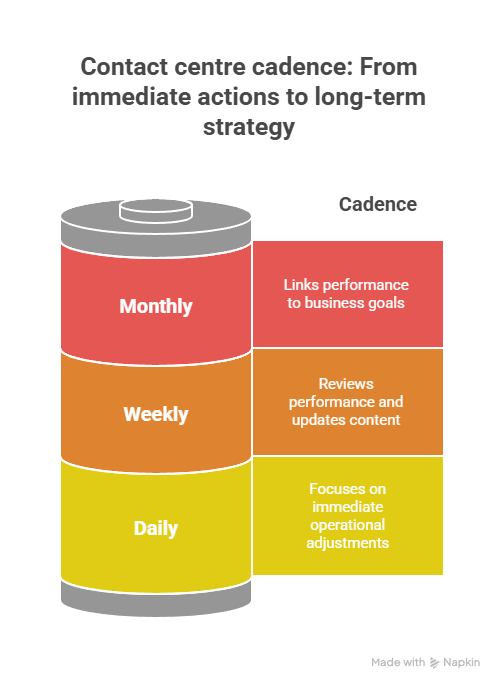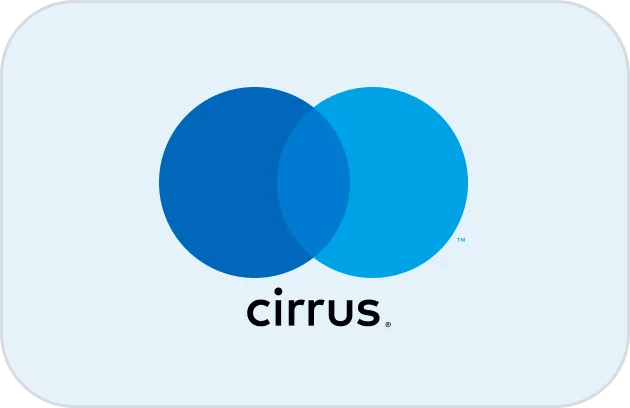If your service team is still juggling tickets, calls, and social DMs in separate tools, you’re not “omnichannel”— you’re leaking customers. Real omnichannel doesn’t mean “we have chat.” It means one brain across every channel that predicts workload, routes by intent and value, coaches in the moment, and proves the straight line from conversation → resolution → revenue. This guide lays out the architecture, operating cadence, analytics, and compliance you need to stop churn, lift CSAT, and make support a profit engine — exactly how platforms like ActiveCalls are built to run at scale.
1) What “Omnichannel” Really Means (And Why Multichannel Fails)
Multichannel = many pipes with many truths. Each channel keeps its own context, metrics, and backlog. Leaders argue about numbers because none of them reconcile. Omnichannel = one conversation graph: voice, chat, email, SMS, social, WhatsApp, app messaging, and bots emit events into a single model; routing and reporting act on that model in real time.
Symptoms you’re still multichannel
-
Agents re-ask verification or problem details across channels.
-
Customers repeat themselves after handoffs.
-
“Handle time” and “first response” can’t be compared across channels.
-
Promotions spike volume and you learn it in the queue, not the forecast.
Omnichannel outcomes you can measure next quarter
-
FCR +8–15% from intent-aware routing and shared context.
-
Abandon −20–40% from callback windows and blended queues.
-
Cost/contact −10–25% by deflecting repeatable intents to guided flows without losing satisfaction.
-
Revenue/contact +10–30% by surfacing upsell/retention triggers in-flow (renewals, plan fit, save offers).
2) Architecture: One Conversation Graph, Many Surfaces
North star: Everything is an event with relationships. You don’t build a channel zoo; you build a global nervous system.
Core objects
-
Conversation (immutable ID): spans channels and time.
-
Message/Call Segment: content + metadata (channel, language, sentiment, SLA clock).
-
Participant: customer, agent, bot, supervisor.
-
Intent: predicted + confirmed (e.g., “return status,” “payment failure,” “premium renewal”).
-
Outcome: ticket resolved, refund issued, appointment booked, plan changed, payment collected.
-
Entitlement: what this customer is owed (SLA/plan/tier/region/compliance).
Pillars you need in call center software
-
Unified routing: skills + language + entitlement + current backlog + customer value.
-
Context memory: customer timeline with cross-channel history, verified identity, and last promises.
-
Real-time orchestration: queues breathe with load; callbacks and channel switches keep context.
-
Analytics bus: every event mirrors to your warehouse with stable IDs.
3) Routing That Ends “Sorry, Wrong Team” Forever
Routing is where churn dies or grows. Treat it like air-traffic control.
Intent-first triage
-
Detect intent in the first 5–10 seconds (NLP on chat/email; IVR short-menu + natural language on voice).
-
Attach a confidence score; if low, route to a generalist triage pod that labels correctly in <60s and forwards.
Entitlement & value routing
-
Premium/at-risk customers skip general queues.
-
Contract language and geo compliance auto-enforce which teams can speak.
Stickiness with fallbacks
-
Keep the conversation with the best-fit agent for N minutes; if breached, fail down to the next best queue of record.
-
Preserve context, promises, and SLA clocks across transfers; re-asking is banned by design.
Callbacks done right
-
Offer the callback when ASA > threshold—not after pain.
-
Use windowed callbacks (e.g., 1:00–1:15 PM), queue with priority at window start, and re-queue if missed.
4) Channel Playbooks: Where to Use Which Surface (and Why)
Each channel should have a job. Abuse channels and you train customers to churn.
-
Voice: high emotion, complex, security-sensitive, or revenue-critical. Use short IVR → agent with context + in-call checklists.
-
Chat (web/in-app): fast troubleshooting, order changes, proactive nudges. Switch to voice with one click for stuck cases.
-
Messaging (SMS/WhatsApp): confirmations, quick updates, short back-and-forth, asynchronous resolve.
-
Email: documents, legal copy, long-form steps; auto-extract intent to avoid 12-hour black holes.
-
Social: triage + brand defense; merge into private channels ASAP with verified identity.
-
Bot: deflect the repetitive 20–40% (status, password, simple how-to) with clear exit ramps to humans.
Golden rule: A channel is successful when switching costs are low and context never resets. If customers feel punished for switching, you built multichannel, not omni.
5) The Omnichannel Decision Matrix (Use This As Your Runbook)
| Intent / Scenario | Best Starting Channel | Fastest Path (What Works) |
|---|---|---|
| Login/2FA issue | Chat/Bot | ID verify → reset flow → MFA tips; escalate to voice only for lockouts. |
| Order status/track | Bot/SMS | Pull order → ETA → delay coupon rule; human only if lost/damaged. |
| Refund/return | Chat | Policy engine + label → confirm pickup → instant status email. |
| Billing question | Chat→Voice | Secure verify → invoice view → waive/plan change path. |
| Payment failure | In-app chat | Tokenized retry → alt method → revenue save script. |
| Plan upgrade/downgrade | Chat | Usage insights → recommendation → one-click change + confirmation. |
| Churn-risk complaint | Voice | Priority route → retention pod → goodwill + fix + follow-up SMS. |
| Outage incident | Bot→Broadcast | Status page → mass notice → callback windows for credits. |
| Technical break/fix | Chat→Co-browse | Decision tree → screenshots → escalate to voice with screen share. |
| Onboarding help | Chat | Checklists + short videos → appointment offer. |
| Warranty claim | Email→Chat | Doc upload → case creation → scheduled call if needed. |
| Identity theft report | Voice | Specialist route → fraud hold → secure docs link. |
| Travel change (airline/hotel) | Voice | PNR lookup → reprice rules → confirm via SMS link. |
| Healthcare appointment | SMS/Chat | HIPAA-aware schedule → reminders → reschedule self-serve. |
| B2B escalation/priority account | Voice | Named CSM line → incident bridge → postmortem follow-up. |
| Social complaint (public) | Social→DM | Acknowledge public → move private with case link. |
| Password reset loop | Bot→Chat | Account check → reset token → security tips; voice only for lock. |
| Delivery reschedule | SMS | Window picker → confirm → driver app sync. |
| Returns abuse detection | Chat→Voice | Policy engine → supervisor approval. |
| Loan status | Chat | KYC verify → status → next docs request. |
| SaaS quota/limits | In-app chat | Usage view → plan rec → billing link. |
| Retail curbside pickup | SMS | Arrived? → spot number → employee dispatch. |
| Warranty registration | Bot | Serial capture → email proof → success SMS. |
| Subscription pause/cancel | Chat→Voice (retention) | Reason capture → save offer → schedule follow-up. |
| Knowledge request (how-to) | Bot/Chat | Article + video → thumbs metric → human if fail. |
| Outreach follow-up (proactive) | SMS/Email | Triggered by signal → deep link to action. |
| Accessibility assistance | Voice/TTY/Video relay | Priority route → ADA/WCAG-compliant flows. |
| Survey/NPS | SMS/Bot | 1-question + open text → alerts for detractors. |
6) Operating Model: Cadence That Moves Numbers
High-performing centres aren’t louder; they’re boringly disciplined.
Daily (30 minutes)
-
Backlog by intent/channel, ASA/Abandon by interval, callback promise rate, deflection success (bot containment with CSAT proxy), live adherence.
-
Two routing changes you’ll ship today (e.g., new priority for a surge intent).
-
CLI/notification health for proactive updates.
Weekly (60 minutes)
-
Cohort review: FCR, AHT, CSAT by intent and channel; scripted vs. unscripted variance.
-
Coaching: the five behaviors customers feel (Greet/Verify, Discover, Resolve, Next Step, Compliance).
-
Content: update micro-scripts, macros, and bot nodes that failed.
Monthly (90 minutes)
-
Business linkage: churn saves, revenue/contact, cost/contact vs. self-serve deflection.
-
Experiment roll-ups: what won (and becomes default), what lost (and is retired).
-
Roadmap: automate the top 10 repetitive steps across channels.

7) QA That Customers Can Feel (Not Just a Score)
Replace 40-point mystery rubrics with a 5-behavior, 0–2 scale:
-
Greet/Verify: fast, correct, confident.
-
Discover: confirms intent, root cause, constraints.
-
Resolve: executes fix or explains best next step.
-
Next Step: provides time-boxed promise and confirmation.
-
Compliance: identity/privacy/consent done right.
Automation assists
-
Auto-detect “next step created” (event in CRM or logistics).
-
Flag risky phrases/events (refund, legal threat, profanity, vulnerable customers) for supervisor review.
-
AI pre-scores to prioritize QA time; humans calibrate weekly on the same set of conversations.
8) Analytics Without Drama: An Events Model Leaders Will Trust
Leaders don’t want dashboards; they want permission to act. You get that with an events schema that survives audit and joins to the business.
Canonical eventsConversationStarted, MessageReceived, IntentPredicted, IntentConfirmed, Routed, Connected, CallbackPromised, CallbackCompleted, Resolved, Escalated, Dispositioned, SurveySent, SurveySubmitted
Joins
-
Agent, Queue, Skill, Channel, Customer, Entitlement, Product, Outcome (ticket closed, refund issued, plan changed, appointment booked, payment collected).
Three layers
-
Intraday: backlog, ASA, abandon, adherence, callback completion, bot containment with handoff rate.
-
Cohort: AHT/FCR/CSAT by intent/agent/channel; scripted vs. unscripted; first-contact deflection.
-
Business: churn saves, refunds avoided, revenue/contact, NRR uplift from proactive service.
Rule: If a metric can’t be reproduced across these layers, it does not go to the exec page.
9) AI Where It Actually Helps (And Where It Doesn’t)
Great uses
-
Intent prediction + auto-triage on messages/emails.
-
Summaries → accurate wrap codes and knowledge updates.
-
Guided replies and micro-scripts in UI.
-
Anomaly alerts: sentiment spikes, repeat contacts, cohort AHT drift.
-
Knowledge extraction: convert solved chats into articles (with human review).
Bad uses
-
Autonomous apologies on escalations; hallucinated policy.
-
Full deflection for high-emotion intents (cancellations, fraud, bereavement).
-
Unreviewed knowledge edits.
10) Proactive Service: Stop Tickets Before They Start
The best contact centres reduce contact without hiding. Use system signals to speak first.
Signals to watch
-
Payment retries, delivery delays, outage markers, usage anomalies, expiring cards, contract anniversaries, failed 2FA, repeated feature errors.
Playbook
-
Trigger a message with a fix link (or scheduled callback) before the customer asks.
-
Suppress survey spam; only solicit feedback when a real promise was made.
-
Attribute proactive touches to saves or revenue (plan retention, on-time delivery satisfaction).
11) Security, Compliance & Trust: Pass Review, Sleep Better
Minimum bar for enterprise buyers today:
-
TLS/SRTP, SSO/SAML, RBAC, immutable audit logs.
-
Redaction: pause/resume or field-level.
-
Data governance: residency options, erasure workflows, retention policies by channel.
-
Accessibility: WCAG-compliant chat, TTY/video relay support, transcripts on request.
-
Sensitive intents: dedicated flows for self-harm, harassment, vulnerable customers; escalation to trained pods.
For regulated verticals (healthcare/finance/telecom), map intents to lawful basis and document your processors/sub-processors; offer pen-test summaries and incident runbooks during evaluation—not after signature.
12) First 120 Days: A Plan You Can Actually Run
Days 1–14 — Foundations
-
Stand up voice/chat/email/SMS with unified routing and verified identity.
-
Publish bot for the top 10 repetitive intents with human escape in <10s.
-
Instrument events to your warehouse; light up the intraday view.
Days 15–45 — Throughput & Quality
-
Add stickiness + fallbacks; enable windowed callbacks.
-
Launch the five-behavior QA; coach one conversation/agent/week.
-
Split queues by intent + entitlement; enforce service for premium/at-risk.
-
Start daily ops huddles and weekly calibration.
Days 46–90 — Cohorts & Proactive
-
Launch proactive alerts for delivery/payment/outage signals.
-
Roll out micro-scripts in UI; move knowledge into guided steps.
-
Publish cohort views; retire metrics that don’t reconcile across the stack.
Days 91–120 — Business Proof
-
Connect outcomes to billing/CRM: refunds, saves, plan changes, collections.
-
Publish the exec deck: churn prevented, cost/contact vs. deflection, revenue/contact per channel.
-
Lock a quarterly experiment slate: 5 tests max; promote winners to default.
13) Change Management: Make Reliability and CX a Habit
-
Change calendar with rollbacks and blast radius.
-
Feature flags for channel bots and routing leaves—ship without fear.
-
Runbooks: cutover, outage, social storm, privacy request, emergency calling, agent surge.
-
Postmortems within 48 hours: what changed, what we rolled back, what we automated so it never repeats.
14) RFP: Questions That Separate Slideware From Systems
-
Model & Data: Can you export every event with stable IDs to our warehouse daily and/or stream in near real time?
-
Routing: Show rules combining intent, value, language, entitlement, and live backlog. How are fallbacks/timeouts handled?
-
Callbacks: Do you support windowed callbacks and priority re-queue at window start?
-
Omnichannel Context: When switching channels mid-conversation, is context preserved and is the SLA clock continuous?
-
AI Controls: Where does AI generate content? How do we constrain policies and review outputs?
-
Security: Redaction options, keys per tenant, audit log immutability, residency controls.
-
Accessibility: WCAG 2.2 AA support, TTY/video relay, transcripts, high-contrast modes.
-
Compliance: HIPAA/PCI/GDPR readiness, DSR automation, lawful basis capture.
-
Operations: Intraday view, adherence, forecasting by intent and channel.
-
Proactive: Which external signals can trigger proactive messages? Show a working example.
-
Survivability: Carrier diversity, regional edges, failover in seconds; show a simulated trunk failure live.
-
Time to Value: Pilot → parallel → full cutover plan with named owners and a rollback pathway.
15) Pitfalls That Kill Omnichannel (And How To Dodge Them)
-
Deflection without dignity: bots that don’t hand off. Fix: require clear exits and measure bot CSAT separately.
-
Vanity dashboards: inconsistent numbers. Fix: events model with three synchronized views.
-
Over-pacing voice: chasing ASA by flooding lines. Fix: callbacks, priority queues, and staff to interval forecasts.
-
Script sprawl: hard-to-find knowledge. Fix: one-page guided flows, snippets, and weekly pruning.
-
Compliance as a project: fragile human memory. Fix: defaults that enforce law (attempt limits, identity verify, recording controls).
16) Sample Save/Revenue Plays You Can Ship This Month
-
Delivery delay save: trigger SMS with live ETA + goodwill offer; detractor alerts to retention pod.
-
Payment retry ladder: failed charge triggers in-app chat + one-click update; second failure escalates to voice retention.
-
Premium white-glove: high-value subscribers skip bot and general queues; 2-minute callback promise with appointment link.
-
Renewal rescue: 60 days pre-expiry, proactive “fit check” chat → plan right-size → NRR lift tracked.
-
Onboarding “first 7 days”: triggered guidance by feature milestones; hand-off to human on frustration indicators.
17) Executive Summary: How to Know It’s Working
You’ll see the machine take over when:
-
Customers stop repeating themselves across channels.
-
Supervisors change routing today and see impact today.
-
Executives ask fewer “are the numbers right?” questions and more “what will we change next?”
-
Outages become non-events with visible health and fast failover.
-
Your board sees revenue/contact up, cost/contact down, and churn bending the right way.
18) FAQs — Short Answers That Change Outcomes
1) How is “omnichannel” measured, not marketed?
You can switch channels inside a single conversation without re-auth, the SLA clock persists, and analytics show one timeline with a single outcome. If any of those break, you’re multichannel. Track “repeat contact within 7 days,” “handoffs per resolution,” and “context loss incidents.”
2) How do we raise FCR without inflating AHT?
Attack variance, not just the mean. Route by intent; give agents guided steps; pre-collect context with bots/forms; and measure “promises kept.” Teams typically gain FCR while AHT falls when checklists replace improvisation.
3) What’s a healthy bot containment rate?
For repetitive intents, 20–40% with equal or better CSAT than human baselines. If handoff rates climb or CSAT dips, your flows are too clever or too rigid. Add exits and fix content weekly.
4) Do we centralize social support or leave it with marketing?
Centralize. Social is a support entry point with brand risk. Marketing monitors; support owns resolution. Pull DMs into the same conversation graph and preserve context when you move private.
5) How do we scale globally without night-shift chaos?
Run regional edges and carrier diversity for voice; staff by **interval forecast** per region; enforce language/entitlement in routing; and mirror events to a single warehouse so analytics compare apples to apples.
6) What should our “save” offer be in retention flows?
Pair a **fit fix** with a **goodwill token**. If reason = price, offer a plan right-size; if reason = feature confusion, schedule onboarding; if reason = service failure, provide a credit and proof you fixed the cause. Track save rate and 90-day stickiness.
7) How do we stop “repeated contact” spirals?
Measure repeats within 7 days by intent; flag when a promise had no outcome event. Message proactively with status, keep a single case owner, and fire supervisor alerts at the second repeat.
8) What does “healthy day” look like for a 60-agent omni centre?
ASA within targets by channel, abandon within band, callback windows honored ≥95%, bot containment steady with CSAT equal to human, adherence ≥90%, and two routing/content tweaks shipped. Leaders spend time on **prevention**, not fire drills.
19) Close: Make Lost Customers a Rare Event
Omnichannel that works is engineering + discipline:
-
Engineer a single conversation graph and route by intent, value, and entitlement.
-
Enforce callbacks, stickiness, and fallbacks so queues stay humane.
-
Coach the five behaviors customers feel and retire vanity metrics.
-
Prove value with an events model that connects to revenue, saves, and costs.
-
Speak proactively when signals predict pain.
Build this on a platform that treats reliability, data, and compliance as design constraints—not add-ons. Do that, and “lost customers” becomes a story you used to tell.








